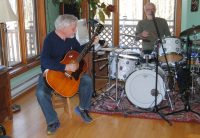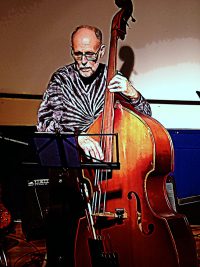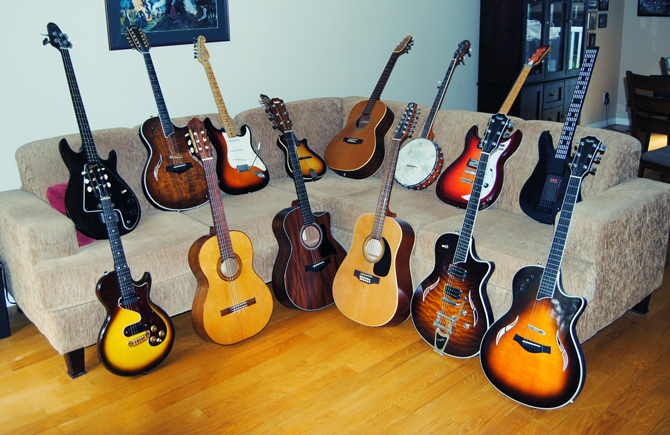The most important thing I learned from Doc Watson was to respect the people who came before. Doc learned much of his repertoire playing with Clarence Ashley (1895-1967), one of the most important artists in traditional Appalachian music. Likewise, Doc Watson became one of the most important musical influences in my life.
“Appalachian” refers to an area of the eastern United States comprised of seven states, from Mississippi in the south to Pennsylvania in the north. Named “Apalachee” by the Spanish, the region has been known, stereotypically, for legends like Daniel Boone, wars between “moonshiners” and “revenuers”, very low standards of education, clan feuding and abject poverty for everyone other than loggers and coal miners, not that they fared much better.
The music of Appalachia is derived primarily from old English and Scottish ballads, Irish and Scottish fiddle music and African-American blues music. The tone of the music is very dark and dominated by stories of broken relationships full of rejection, abandonment and infidelity, often ending in murder.
Appalachian music is traditionally played only on stringed instruments, most notably the 5-string banjo which was played in a “clawhammer” style of picking with the instrument tuned in an open 4th chord, known as “sawmill” or “modal” tuning, both of these characteristics developed by Clarence Ashley. I tune and play my banjo in “The Cuckoo” and my guitar in “Little Sadie” in this fashion to honour Clarence Ashley.
I have loved Appalachian music since I was a young man and now, I finally get to record some thanks to my collaboration with Roch Tassé and newcomer Alrick Huebener, a fine upright bass player from Ottawa. And for the first time, I sing!
The Cuckoo
“The Cuckoo” is an early 19th century English folk song first recorded by Clarence Ashley in 1929. In its earliest versions, the cuckoo is likened to a roving and inconstant lover. I have added the verse about Angola prison, one of my favourites, which is taken from “Junco Partner”, a New Orleans standard popularized by Dr. John. I have also added a Cajun flavour to the piece with the addition of a triangle, called “’tit fer” (little iron) by the Louisiana Cajuns.
Richard Séguin – voice, banjo, acoustic guitar, mandolin
Alrick Huebener – upright bass
Roch Tassé – triangle
Little Sadie
“Little Sadie” is a 20th century Appalachian ballad also first recorded by Clarence Ashley in 1930. Some earlier versions were entitled “Bad Lee Brown” although there are no known instances of an American killer named Lee Brown. The addition of drums, although against Appalachian tradition, brings a more modern flavour to this great song. Alrick plays the ending chords with a bow.
Richard Séguin – voice, acoustic guitar, mandolin
Alrick Huebener – upright bass
Roch Tassé – drums


